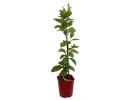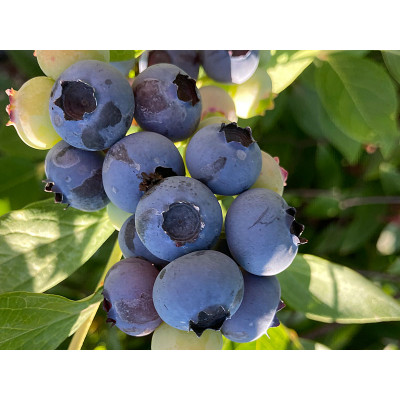Schisandra chinesis SADOVA NO1




- The shipping price depends on the weight of the ordered goods (the more products, the cheaper the price)
- after you have placed the plants in the shopping cart, enter “calculate provisional shipping price” in the shopping cart, after entering the data the eshop will calculate the provisional shipping price for you.
Ask a Question About This Product
| Specifications | |
| Height at sale | 50-60cm |
| Pot | C2 |
| Sell as | 2 year old |
| Ripening time | August/September |
We send goods on Monday, Tuesday, Wednesday, by agreement also Thursday or Friday.
- Stock: In Stock
- Model: schisandra
Schizandra chinensis 'Sadova No1' is also known on the Slovak market under the name of klanopraška known from the Czech Republic. In an ornamental garden it can play the role of an ornamental plant with interesting flowers and fruits, but at the same time it will be a representative of utility plants. It is self-pollinating and also quite hardy. From the point of view of the harvest, it will attract us with its fruits, which have a use as common berries. Schizandra can be eaten raw, dried, in the form of syrups, jams, marmalades, but it can also be used in liqueurs and homemade wine. An important characteristic of these berries is their antioxidant and vitamin C content. It is thus a representative of a non-traditional fruit that does not require demanding care. An important step towards success is regular watering when the plant is young and not yet 'established' in the soil and during periods of heat and drought. The second step to success is the vertical space you give the plant. It is otherwise undemanding, with its benefits returning to the grower several times over.
Schizandra cultivation and location
The Sadova No1 cultivar comes from Ukrainian breeders who based it on proven Chinese varieties. This exotic-looking climbing plant surprises with its strong growth. If fixed on a support, the grower will get a height of 3 metres. However, it can also reach heights in excess of 4 metres in good conditions and without a trellis. It is delicate and fragile, requires support and is ideally suited to poles and structures, walls, pergolas, outbuildings and fences. Such a space will give them support and also protection against strong winds. It can also be structures that are otherwise used for vines. To put it lightly, from the name 'Sadova NO1' alone, we can already suspect that it deserves its name. It represents an important variety in terms of berry yield. With sufficient nutrients, it produces a rich harvest and the potential for industrial cultivation.
The ideal soil will be a moist but permeable fertile soil, which may have a slightly acid pH value. Fertilise ideally in spring and in such a way as not to increase the alkalinity of the soil too much, as it thrives better in neutral to acidic soils. If you are using home-made compost, then it should be free of eggshells. The plant will take advantage of the direct sun to grow vigorously and produce unique fruits that ripen in late September to early October. It is hardy down to -30°C and therefore suitable for the whole gardening area of Slovakia. It is also suitable for higher altitudes.
Advantages of the plant
- Looks interesting during growth, flowering and fruiting
- The clusters can become bulkier, heavier and richer in berries with age
- The interesting fruits will delight you and your family with their unusual taste. They are said to be a fruit with several flavours at the same time.
- Planting two plants side by side will encourage fruit production more strongly
- With a young plant, there is no need to worry about its condition if it produces a poor crop. The ideal harvest comes after it reaches maturity (around 5 years).










































































